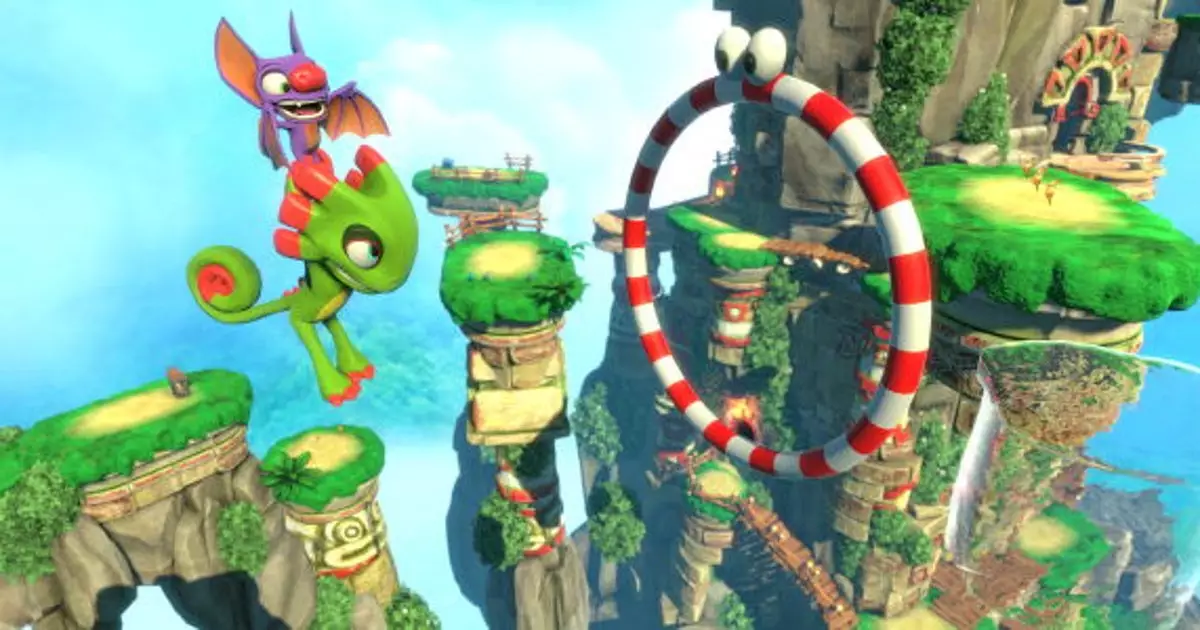The recent layoffs at Playtonic Games, known for their efforts to revive the classic mascot platforming genre, underscore a significant crisis in the gaming industry. This decision has been framed as a response to “profound change” in the development and financing of games, a vague statement that leaves room for speculation. As the industry evolves, it faces pressures from multiple fronts, including inflated production costs and the rising dominance of multiplayer and service-oriented games, which threaten to eclipse the once-thriving platformer genre.
While the notion of “change” is universal in creative industries, the reality is harsher when contextualized within economic fluctuations and changing player preferences. Playtonic’s struggles may not stem solely from inherent flaws within the company but rather reflect the industry’s broader inability to sustain its previous momentum after an explosive pandemic-fueled period. The sudden reliance on platformers, nostalgic as they may be, seems increasingly at odds with market interest, which is shifting toward online experiences, increasing the pressure on developers like Playtonic to adapt or risk obsolescence.
Valuing Creative Talent in Turbulent Waters
In the wake of the layoffs, Playtonic issued a poignant statement acknowledging the expertise and dedication of their departing team members. This recognition should not merely serve as a casual farewell but be a call to action for other studios to remember the value of their creative talents. Anni Valkama, Playtonic’s brand manager, took to LinkedIn to highlight the strengths of the affected employees, appealing to the industry’s ecosystem to take them in. However, this act of goodwill reflects a bittersweet reality—overlapping networks and a competitive job market filled with talent can only soften the blow so much.
The layoffs signify more than just a number on a spreadsheet; they represent the displacement of passionate artists and developers whose contributions have shaped the company’s identity. The words of Playtonic signal empathy, yet they often don’t match the stark realities of navigating financial sustainability in the industry. The emotional fallout of such decisions weighs heavily on the remaining staff and challenges the fundamental principles of creative collaboration.
A Historical Context: The Rise and Fall of Nostalgic Robotics
Founded in 2014 by former Rare employees, Playtonic Games was part of a revivalist movement, hoping to recapture the magic of platformers like “Banjo-Kazooie.” In their first foray, Yooka-Laylee aimed to summon the spirits of late ’90s gaming yet failed to make a lasting impact despite its nostalgic appeal. The genre’s limited commercial prospects have left many developers questioning its viability, and more established companies are increasingly reluctant to risk investment in traditional platformers.
This historical context highlights that the industry’s current landscape is not only dictated by the present but is significantly influenced by nostalgia. Playtonic emerged amidst a retro renaissance, yet now they find themselves navigating an environment more fitting for aggressive service games that offer long-term player engagement through microtransactions and expansion content.
The Fragility of Market Dynamics
The abrupt shift in expectations from the industry post-2020 exacerbated the challenges faced by Playtonic and similar studios. The pandemic transformed gaming habits, encouraging massive growth in player engagement and significant revenue streams. Yet, as the world opened up again, many developers were left grappling with overstretched budgets and inflated consumer expectations, leading to a stark normalization of layoffs across the sector.
Playtonic’s unfortunate but anticipated response emphasizes an underlying fragility within the marketplace where hype oftentimes outstrips sustainability. The innovative ideas that drove early successes in the gaming industry’s golden age now compete against titles designed to keep players engaged indefinitely. This raises critical questions about the future of game design and player engagement: Will creative studios like Playtonic, with their nostalgic values and commitment to character-driven narratives, continue to exist in a domain that increasingly favors fewer, bigger titles with mass-market appeals?
As Playtonic seeks to navigate these tumultuous waters, their choices might echo across the industry, prompting other developers to reevaluate their own trajectories in a landscape defined by resistance to change. The questions remain—can we reconcile the rich history of platforming with the unrelenting forward push of the industry? Will Playtonic be able to adapt, grow, or will they become yet another example of lost potential in an unforgiving sea of transition?

